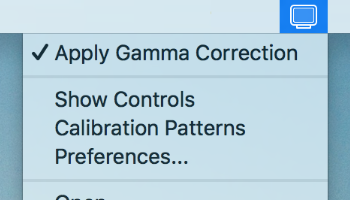
At the bottom scale, doubling the brightness returns the correct physical brightness, but since our eyes perceive brightness differently (more susceptible to changes in dark colors) it looks weird.īecause the human eyes prefer to see brightness colors according to the top scale, monitors (still today) use a power relationship for displaying output colors so that the original physical brightness colors are mapped to the non-linear brightness colors in the top scale. amount of photons leaving a light source, the bottom scale actually displays the correct brightness. However, when we're talking about the physical brightness of light e.g. The top line looks like the correct brightness scale to the human eye, doubling the brightness (from 0.1 to 0.2 for example) does indeed look like it's twice as bright with nice consistent differences. To better understand what this all means take a look at the following image: This happens to (coincidently) also closely match how human beings measure brightness as brightness is also displayed with a similar (inverse) power relationship. Doubling the input voltage resulted in a brightness equal to an exponential relationship of roughly 2.2 known as the gamma of a monitor. These monitors had the physical property that twice the input voltage did not result in twice the amount of brightness.

In the old days of digital imaging most monitors were cathode-ray tube (CRT) monitors. Thanks for looking.Gamma Correction Advanced-Lighting/Gamma-CorrectionĪs soon as we compute the final pixel colors of the scene we will have to display them on a monitor. This is a cropped image so is slightly soft. Captured using OAcapture, using a ZWO174mm / Mounted on an Edge1100HD / CGEMDX mount. Delaunay itself is around 28 miles in diameter, and rises to a height of around 5800ft. This is a central ridge within the crater which is high enough to catch the light and cause additional shadowing within the northern part of the crater. La Caille is at the two o clock position when looking at Purbach, and then you should be able to see the crest line of Delaunay.

The main craters in view are Purbach (centre.still heavily in shadow)) & Regiomontanus (South of centre, and you can make out Regiomontanus A which is the peak of the wrecked formation). This image was taken back in January this year (5th) and this shot shows the Sun rising over the craters in the South Eastern quadrant (within the Arzachel region). This is a cropped image to point the viewer towards an interesting feature well worth having a look at. Captured in oaCapture, Stacked in Autostakkert2 (211 frames), sharpened in Regista圆, finished in Photoshop. Equipment: Celestron Edge1100 HD mounted on a CGEMDX, ZWO174mm camera with an IR pass 742 filter. The area to the North and East in this image is called the 'Lake of Dreams (Lacus Somniorum). They are considered to be tectonic in nature. It also shows the 'Wrinkle ridges' or Dorsa in the lower left of the image. The Sea of Serenity shows how relatively smooth they are. It has a flat lava filled centre interuptted with the 11KM Posidonius 'A crater, as well as numerous Rilles (the lined depressions). Its focus is of the interesting crater Posidonius which is in the north eastern quadrant of the lunar surface, and on the edge of the 'Sea of Serenity' (Mare serenitatis)' Posidonius is roughly 96KM (58 Miles) in diameter and is termed a 'Walled Plain'.

The Moon was roughly 374507 km / 232707 Miles (29.39 Earth diameters) away at the time of imaging and a phase of around 73% This one was nearing the end of the session. Thanks for looking.Īnother image from the 19th November. Captured in oaCapture (1744 frames (around 17fps)), Stacked in Autostakkert2 (189 frames), sharpened in Regista圆, finished in photoshop. Camera: ZWO174mm with an IR pass filter (due to poor seeing). Equipment: Edge1100HD scope, mounted on a CGEMDX. The high walls of the crater are also show large terraces which can also be seen. It has a rather flat floor, except for the central mountain just seen in the last light of this image.

It is an 88KM (53 mile) impact crater, with a height of around 4 thousand 500 mtrs (13,600ft) from the crater floor to its rim. The Crater Piccolomini toward the left hand side of this image seems to mark the end of the fault. In the image you can see the shadows being cast by the size of the fault. The scarp is orientated in a North West (the top right corner) / South East (bottom Left) direction, forming a slight arc. The Rupes Altai is a scarp that is around 480KM (291 miles) long, with a height of around 1000 mtrs (3000ft). This one is rotated 90 degrees clockwise from its normal viewing position.


 0 kommentar(er)
0 kommentar(er)
